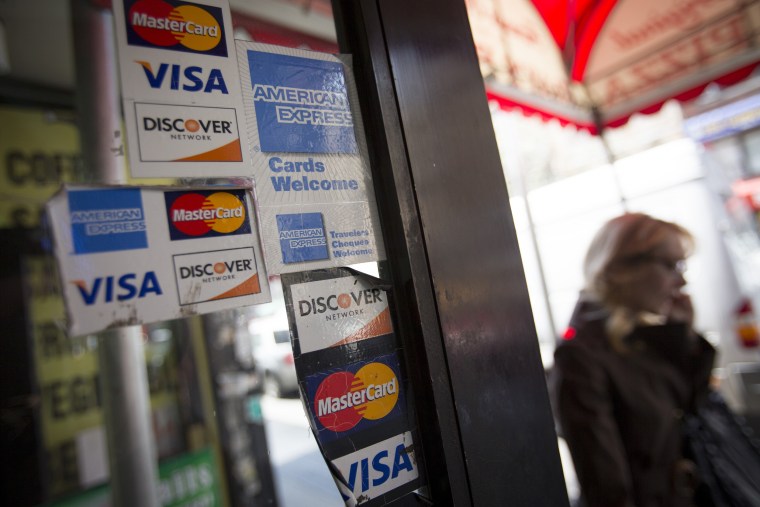Although shoppers kept credit card machines busy this holiday season, growing evidence indicates that Americans are starting to feel uneasy about the pile of debt to which we continue to add.
A new survey from CreditCards.com finds that more than two in five Americans currently carrying debt don’t know when they’ll pay off those balances — and one in four say they expect their debts to outlive them.
“It’s definitely a depressing statistic,” said Ted Rossman, industry analyst for the site. “When we did a similar study back in 2013, only 9 percent never expected to get out of debt, and now it’s 25 percent.”
A total of nine increases in the Federal Reserve’s benchmark interest rate since the end of the Great Recession means that credit card APRs — nearly all of which are variable and tied to the Fed’s prime rate — are at a record high of 17.41 percent, Rossman said. By comparison, the lowest average credit card rate came in April of 2008, hitting a trough of 11.11 percent.
Higher APRs makes it harder for borrowers, who owe an average of roughly $5,700, to pay off their balances. “Making only minimum payments at the average rate, you’ll be in debt for almost 20 years and you’ll pay more than $7,000 in interest,” Rossman said.
“Credit card rates take a huge bite out of your monthly budget,” he said. “It’s so important for people to pay those bills in full.” If people don’t have the money to do that, Rossman suggested that borrowers with good credit — and good financial discipline — look into a no-fee balance-transfer credit card, which can offer people some breathing room to pay down their balances.
Americans also are increasingly leery about adding on to their debt loads by buying a home and taking on a mortgage. Last month’s Fannie Mae Home Purchase Sentiment Index found that the number of Americans who think it is a good time to buy a home dropped by 12 percentage points in one month.
"Consumer attitudes regarding whether it's a good time to buy a home worsened significantly in the last month, as well as from a year ago, to a survey low," Doug Duncan, senior vice president and chief economist at Fannie Mae, said in a release.
Duncan attributed this more negative outlook to rising home prices that outstripped wage growth. Mortgage rates also rose last year about half a percentage point, on average, ending the year with an annual average of 4.54 percent, versus 3.99 percent in 2017.
Despite our misgivings, though, we continue to borrow, especially on cards: According to Federal Reserve data, Americans increased revolving debt by nearly 11 percent on an annualized basis in October. In the third quarter, total debt rose to $13.5 trillion in the third quarter of 2018, including a 1.6 percent increase in mortgages, 2.2 percent growth in auto loans and 2.6 percent added onto student loans.
Jill Gonzalez, senior analyst at Wallethub.com, said it’s likely that holiday shoppers added even more to that pile of debt during the fourth quarter with credit card spending. “From what we’ve seen, we’re on track to end the year with more debt overall than we did in 2017, which was a record-breaking year,” she said.
The concerns revealed by respondents to the CreditCards.com survey could be well-founded: Third-quarter data from the American Bankers Association found that delinquencies among credit cards issued by banks rose from 2.93 percent to 3.05 percent. Although the trade group noted that this still is below the pre-recession average of 4.33 percent, there are other signs of stress in Americans’ ability to keep up with their borrowing. Last year, data from credit bureau Equifax found that the number of severely delinquent store credit card accounts rose to 4.65 percent, and that delinquencies hit their highest level since early 2011.
“I think American consumer confidence is very high,” Gonzalez said. “Should it be that high? I don’t think so,” she said. “People are overextending themselves and interest rates are rising… That’s why we’re seeing these delinquencies.”
